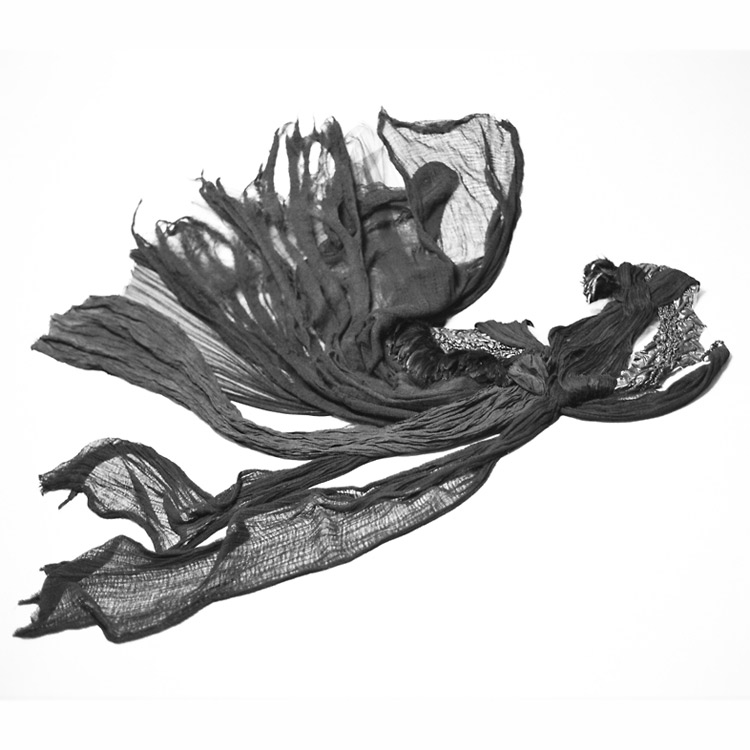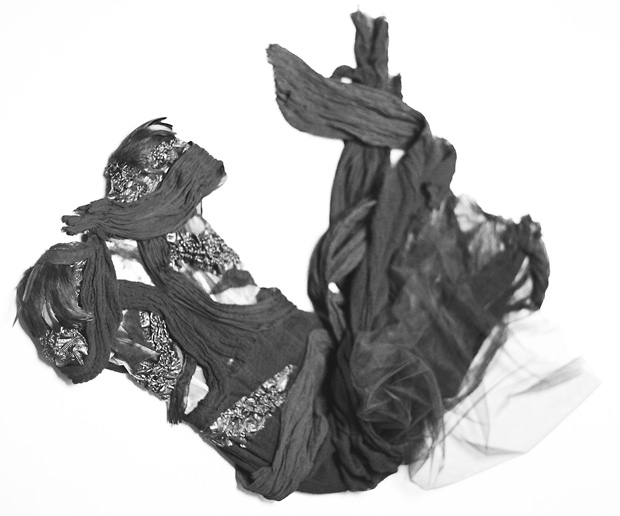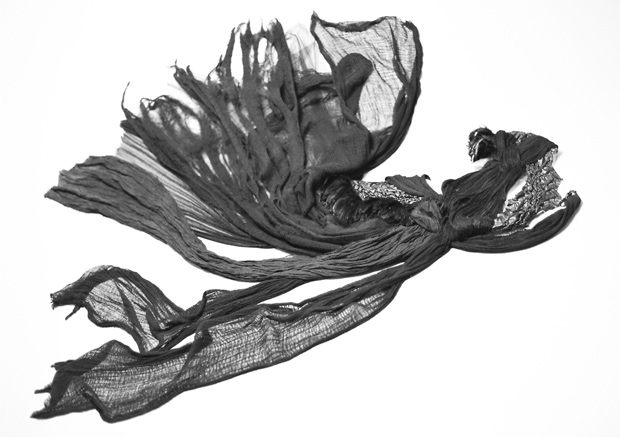Rodarte: States of Matter
A backstage look at the Mulleavy sisters’ sculptural exhibition with MoCA curator Rebecca Morse



Since launching their label Rodarte in 2005, sisters Laura and Kate Mulleavy have proven themselves to be rare birds within the fashion industry, producing work that blurs the line between fine art and fashion design. There are very few designers today who are able to comfortably inhabit both realms—and to such critical acclaim. In 2009 Rodarte won the CFDA Womenswear Designer of the Year award and became the first fashion house to receive a United States Artists grant, the following year the sisters were honored with a National Arts Award in the young artist category. Now they find themselves the focus of MoCA‘s latest exhibition “Rodarte: States of Matter”—a show featuring more than 20 pieces from the Mulleavys’ various collections, including tutus the pair created for the film Black Swan.
Further conflating art and fashion, MoCA and Rodarte enlisted Alexandre de Betak to help conceive the show. Best known for his work designing elaborate runway show sets, de Betak added heightened drama to the installation, showing the garments as sculptural objects freed from clothing’s traditionally reliant relationship to the human form.
“Rodarte: States of Matter” runs from 4 March 2011 through June 5 2011 at MoCA’s Pacific Design Center. We recently caught up with the show’s organizer, Associate Curator Rebecca Morse as she readies the show for its debut.
Are the dresses in the show presented on bodies?
There aren’t traditional mannequins. We had made forms from a cord plastic material that are then hanging from a wire in the ceiling. So the bodies are filled out a little bit. The forms are also cut to mimic the shape of the dress or the tutu, so there is a bit of a hardness behind the fabric, but there’s not a traditional mannequin.
How were you able to accomplish showing motion without bodies?
The tutus are the ones that are in motion. They are hung from wire—everything is hung from wire, but that wire’s hung to a motor. They’re spinning at one revolution per minute.

How many ballet costumes from Black Swan are in the show?
The only costumes from Black Swan are tutus, and there are three black ones downstairs, and three white ones upstairs. And one of the white ones upstairs has a blood stain in it.
Ballet costumes are very sculptural by nature. Was the show’s theme influenced by your knowledge that Laura and Kate Mulleavy were already collaborating on ballet costumes for Black Swan?
I think it sort of simultaneously occurred. In the exhibition the tutus are sandwiched chronologically between the black dresses and the white ones. And so I think what happens is you see their method of working, which in part leads to the tutus, and then what they do after that. So I think the sculptural component, I think it’s very easy to see in the tutus because they’re made with layers of tulle and they literally stick out, but their other work as well—you can see their attention to details in so far as the materials they use and the way they’re layered over each other. So we’re talking about those too in terms of having sculptural components—really looking at them as three-dimensional objects.

How deliberate was the color scheme?
Very. The idea was to have it be these monochromatic vignettes. You have the black, the white, and then there are two dresses from the [Fall] 2008 collection and those are white and red, and so those two dresses are hung actually with the white tutu with the red blood stain on it.
Laura and Kate’s influences vary so wildly from collection to collection—from Japanese horror films to California condors. Are any of these original references visually demonstrated in the show’s presentation?
I think definitely, because the black collection is based on the California condor—they talk about the narrative influence on that work—and so it’s really interesting to see those garments hung with the Black Swan tutus, because there’s some feathers used in the black dresses that are then used again in the tutus. So it does double back, and their interest in Japanese anime and their overall interest in film as a source—I think it was interesting that they were then asked to do the costumes for Black Swan, the film.
Is this MOCA’s first collaboration with Alexandre de Betak?
Yes. He’s worked with [the Mulleavys] for quite some time so they have a very good relationship. He’s done some museum exhibitions before, but he’s generally a runway set designer and producer. It was great to get his input on this installation. It’s very different from our usual way of showing work. It’s very dramatic and narrative.
Does sound accompany the show?
In the end we decided not to have any sound. But the lights have a sequence that [de Betak] took from Swan Lake—the aural cue for timing that. I don’t know how one-to-one it is, but he did use that as a way of coming up with the patterning and beats for the lights.
Images by Autumn de Wilde











